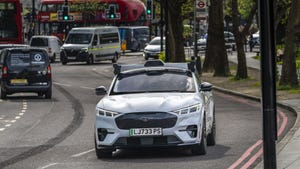Moisture, dust and rats – the problems connecting London’s Tubes
We’ve joked before about how desperate Londoners are to avoid conversation, but now there is political clout behind the drive for connecting the London Underground. And it’s more complicated than you would think.
January 9, 2018

We’ve joked before about how desperate Londoners are to avoid conversation, but now there is political clout behind the drive for connecting the London Underground. And it’s more complicated than you would think.
The last couple of months has seen London Mayor Sadiq Khan promise connectivity on the Underground. We all cheered, because avoiding eye contact with other passengers becomes awkward after a while, especially if you know them. Connectivity on the Tube is now a necessity. And because Mayor Khan has promised it, there’s no going back. Whether delivering a 4G network on the Underground by 2019 is achievable is already an iffy question, especially considering how complicated it will turn out to be.
“Connecting the London Underground is a fantastically challenging task, where you have an opportunity to rewrite the rulebook,” said BAI Communications Technical Director Andrew Conway.
This is an area which creates a complicated equation. There are not-spots in the countryside, but when you are on the Tube you can’t just walk up and plant a mast. It’s under a lot of concrete and not exactly the most conducive for connectivity. It’s arguably one of Europe’s largest hotspots, while it has more people per square metre than anywhere else, or at least Highbury and Islington station feels that way at 8.15am. Connected the unconnected is always difficult; if it was easy they would be connected, but this is another beast.
The London Underground is a collection of 270 stations which are connected by 11 different lines, running 402km. The annual ridership is 1.379 billion passengers, 5 million a day, with the first passenger being taken in 1863. At the time of writing, it is one day short of 155 years old, and some of the Victorian tunnels and fixtures are not necessarily the most advantageous when it comes to 21st century infrastructure.
“London’s system is the oldest in the world, and the Victorian assets offer some very unique challenges,” said Conway.
Due to the age of the system, Conway described the conditions as very hostile for a mobile environment. It’s hot, humid and windy. The brakes give off dust, and the tunnels are home to vermin of all kinds. In short, these are not the best conditions to try and install and operate mobile infrastructure.
This is what BAI Communications does. It designs, builds and operates communications networks in transport corridors. This includes traditional train routes, but also the New York Subway and Hong Kong’s Metro, as well as other intracity transport systems. The company acts as a host neutral ‘mediator’ between the three stake holders; government, the transport operator and the telcos. All three have different objectives, safety considerations, planning timetables and operational models. It makes things a bit complicated.
Aside from hardening the electronic equipment so it is suitable for the hostile underground environment, another challenge which London is set to serve up will be the timetable. During yesteryear, there was a very short window of time when the Tube shut down for the night. This was a time maintenance or improvements could be done, however this window has been getting smaller.
2017 saw the introduction of 24 hour tubes on Friday and Saturday nights on certain lines. Due to the popularity, this is likely to be expanded. Shutting down a transport system which moves 5 million people a day is not an option here, so planning and operations will have to be incredibly accurate and, above all else, efficient.
And that is assuming you can actually find the people to perform the work itself. Not only will these workers have to be qualified telecommunications engineers, they will also have to be trained and comfortable with the rules and regulations of operating in a very unique environment. They will also have to be okay with small, dark and damp spaces, where they won’t be more than a couple of feet away from a rat. This promises to be a very short list of people.
That said, for every challenge there is the drive to move forward. Conway highlighted this is no longer just a nice-to-have, it is a politically charged project, which has been very publicly projected, and is a critical component of the digital economy. In today’s world, if you are not connected you are no longer relevant.
However, we just want something to do on the train because talking to other people is 100% definitely not something we do in London.
About the Author(s)
You May Also Like











_1.jpg?width=300&auto=webp&quality=80&disable=upscale)


.png?width=800&auto=webp&quality=80&disable=upscale)